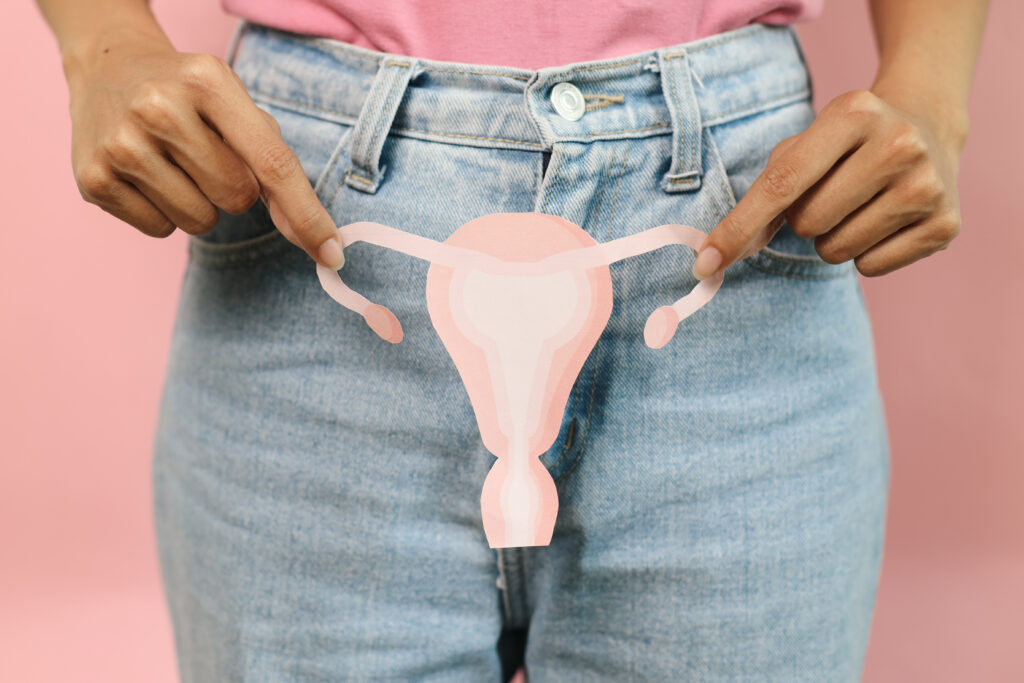Platelet-Rich Plasma Therapy (PRP) has gained significant attention in the world of healthcare, with athletes and notable individuals turning to this innovative treatment for healing and rejuvenation. Renowned athletes like Tiger Woods, Rafael Nadal and Kobe Bryant, along with celebrities like Kim Kardashian, have publicly shared their experiences with PRP therapy. By tapping into the body’s natural healing capabilities, PRP therapy offers a promising avenue for accelerated tissue repair, reduced pain and enhanced well-being.
Let’s explore the fascinating world of PRP therapy, its mechanisms, the conditions it can address and the transformative benefits that have attracted athletes and celebrities alike. Get ready to discover the power of PRP therapy and the potential it holds for optimizing your health and vitality.
What is platelet-rich plasma therapy?
Platelet-Rich Plasma (PRP) is a concentrated form of platelets derived from your blood that has extraordinary healing abilities. These platelets are brimming with growth factors and essential proteins that are keys to unlocking your body’s healing potential. Imagine having a powerful superhero within your blood, ready to heal and regenerate your body — that’s PRP.
How does PRP therapy work?
It starts with a simple blood draw, where a sample of your blood is collected. This sample then undergoes a fascinating transformation through centrifugation, separating the platelets from other blood components. The result is a highly-concentrated platelet-rich plasma solution, a healing elixir tailored to your specific needs.
Once the PRP is prepared, skilled medical professionals administer targeted injections to the treatment area. The platelets, rich in growth factors, stimulate cellular growth, collagen production and tissue repair, initiating the healing process, working alongside your body’s natural regenerative abilities.
What conditions does PRP therapy treat?
PRP therapy demonstrates its versatility and effectiveness in addressing a wide range of medical conditions including hair loss restoration, skin rejuvenation, and wound healing — providing a ray of hope for individuals across different domains.
The field of dermatology primarily benefits from this innovative therapy. PRP has shown promising results in hair loss restoration, stimulating hair growth and improving the overall appearance of the scalp. Harvard Medical School reported that PRP works best when combined with other drugs in treating hormone-related baldness called androgenetic alopecia. It was also utilized for skin rejuvenation and was found effective in improving dark circles and wrinkles in a clinical trial published by Acta Biomedica Journal. Furthermore, PRP plays a crucial role in wound healing, damaged tissue repair and reducing the risk of complications.
In a study published by The National Institute of Health’s US. National Library of Medicine at Clinicaltrials.gov, PRP was given to Covid-19 patients with olfactory dysfunction and found to be safe and effective one month after the injection.
The broad applications of PRP therapy demonstrate its potential to revolutionize the treatment landscape across multiple domains, contributing to faster recovery, improved outcomes and enhanced well-being for patients.
What are the benefits of PRP?
PRP therapy harnesses your body’s innate healing abilities, offering a natural and holistic approach that includes accelerated healing, reduced scarring, personalized treatment, a safer alternative, effective pain management, and enhanced overall well-being.
Accelerated Healing
According to the journal Burns and Trauma published by the Oxford University Press, PRP therapy promotes faster healing by stimulating cellular growth and tissue repair, reducing recovery time and allowing you to return to your daily activities sooner.
Reduced Scarring
By activating the regenerative processes within your body, PRP therapy can minimize scarring. This study published in the Clinical Dermatology Review showed that PRP therapy leaves behind less noticeable marks and enhances a treatment’s overall aesthetic outcome.
Personalized Treatment
PRP therapy is tailored to your needs as it utilizes your blood components. This personalized approach ensures that the treatment aligns with your unique body chemistry and maximizes effectiveness.
Safer Alternative
PRP therapy avoids synthetic drugs and invasive procedures, reducing the risk of adverse reactions and complications. It offers a safer treatment option with fewer side effects according to a 2022 comparative study published in the Cell and Tissue Banking — International Journal for Banking, Engineering and Transplantation of Cells and Tissues Incorporating Advances in Tissue Banking.
Pain Management
According to the study Regenerative Medicine: Pharmacological Considerations and Clinical Role in Pain Management, PRP therapy has shown promising results in managing pain associated with various conditions. By promoting healing and reducing inflammation, it can alleviate discomfort and improve your quality of life.
Enhanced Well-being
Beyond its localized effects, PRP therapy can positively impacts overall well-being. It supports immune response, boosts collagen production and rejuvenates tissues, contributing to a revitalized and healthier you.
Experience the transformative power of PRP therapy as it unlocks your body’s natural healing potential, providing a holistic approach to recovery and well-being.

What are the possible risks and side effects of PRP?
Infection and allergic responses are potential risks associated with PRP therapy, although they are rare. Ensuring your safety is vital when considering any medical treatment, including PRP therapy. While PRP therapy is generally safe, it’s essential to be aware of potential risks and take necessary precautions. By understanding the safety profile and following proper protocols, you can make an informed decision and minimize any possible adverse reactions.
It’s crucial to have the procedure performed in a sterile environment by a qualified healthcare professional to reduce the risk of infection. Allergic reactions may occur, especially in individuals with known allergies to components present in the PRP preparation. Your healthcare provider will evaluate your medical history and discuss any potential allergies or contraindications before proceeding with the therapy.
Do certain conditions mean PRP can’t be used?
Certain conditions or situations may require caution or indicate that PRP therapy should be avoided. Individuals with blood disorders, active infections or certain types of cancer may not be good candidates for PRP therapy. Pregnant or breastfeeding women should consult their healthcare provider before considering the treatment. Additionally, individuals taking blood-thinning medications or with a history of severe allergic reactions should exercise caution. It’s crucial to discuss your medical history and any existing conditions with a qualified healthcare professional to determine if PRP therapy is appropriate for you.
How is PRP different from stem cell therapy?
PRP therapy and stem cell therapy are both regenerative treatments that promote healing and tissue regeneration. However, they differ in their approach and mechanism of action.
PRP therapy utilizes the concentrated form of platelets from your blood, while stem cell therapy uses stem cells derived from various sources such as bone marrow or adipose tissue.
Both treatments have shown promising results in various medical fields. Still, the specific choice between PRP and stem cell therapy depends on factors such as the nature of the condition, desired outcomes and the availability of resources and expertise in your healthcare setting.
What are the key considerations for PRP therapy?
Embarking on your PRP therapy journey requires careful consideration and research. Prioritize seeking consultation with a qualified professional specialized in PRP therapy to ensure an informed decision. They will evaluate your condition, determine your candidacy and guide you throughout the process.
Understanding the efficacy and success rates of PRP therapy for your specific needs is crucial. Recognize that individual results may vary based on factors like the treated condition and your body’s unique response. Educate yourself about the potential benefits and limitations associated with PRP therapy to set realistic expectations.
Financial considerations play a role as well. Take a look at your insurance coverage options, as PRP therapy may not always be covered. Additionally, familiarize yourself with the costs involved to ensure financial preparedness.
Explore success stories and testimonials from individuals who have undergone PRP therapy. While personal experiences can provide insights, remember that every case is unique. Use these stories as a source of inspiration and motivation while keeping in mind that your results may differ.
Shaman’s Leawood Total Wellness and PRP Therapy
Shaman’s Leawood Total Wellness is led by experienced medical professionals. Our team of experts combines medical knowledge with a holistic approach to provide comprehensive care. With our deep understanding of PRP therapy and its potential benefits, Shaman’s Leawood Total Wellness offers a trusted environment for those considering this regenerative treatment. By choosing our services, you can benefit from the expertise of skilled professionals who prioritize your well-being and are dedicated to helping you achieve optimal health through PRP therapy and other holistic approaches.
To explore the potential benefits of PRP therapy and discuss your specific needs, we invite you to book a consultation or contact us at Shaman’s Leawood Total Wellness. Whether you’re seeking PRP therapy or other holistic wellness services, we’re here to support you on your journey to optimal health. Call us or visit our website to schedule a consultation and embark on a path toward complete wellness.





